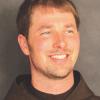Last month, I attended a Skype session with the director of the Vatican Observatory, Jesuit Br. Guy Consolmagno at Mercy High School in Middletown, Conn. When Br. Guy came on the screen and gave a demure wave, the auditorium of the all-girls' high school erupted with whistles and cheers like it was a One Direction concert.
Consolmagno, in his 60s, with thick glasses and a more-salt-than-pepper beard, maintained that high energy level for over an hour with his wit, personal stories, and depth of scientific knowledge. Members of the school’s astronomy club asked Br. Guy questions that varied from his childhood to the prospects of baptizing extraterrestrials.
Citing the 2014 book, Would You Baptize an Extraterrestrial?, which he co-authored with Jesuit Fr. Paul Mueller, Br. Guy responded that he would baptize an alien, but only if the alien requested the sacrament. A self-professed "nerd," Br. Guy also related stories about sharing his name with an asteroid, living in the party-dorms as an undergrad, and his bantering with God that led to his joining the Jesuits.
Br. Guy also clarified that the telescope at the Vatican Observatory, "makes faint objects brighter, not small objects bigger."
The effort to illuminate the darkness between faith and science is a critical mission for the church today. As a Capuchin Franciscan Friar, I am particularly proud of the Franciscan contribution to scientific inquiry. Franciscan Friar Roger Bacon was the grandfather of what would become the scientific method. Despite this fruitful historical connection between science and religion, fewer people are aware of this link between religion and science.
An example of this lack of awareness came last year, when Pope Francis affirmed that the big-bang theory (the cosmological model, not the CBS sitcom) is compatible with Catholic faith. When the pope announced this, there was a collective facepalm from those Catholics who are aware that Fr. Georges Lemaître, a Belgian Catholic priest, originally proposed the theory in 1927. This is akin to the Patriots football team trying to convince quarterback Tom Brady to consider the forward pass. The fact that many people thought Pope Francis' statement was "news" would be risible if it wasn't such an embarrassing indictment of our need for better catechesis around the positive relationship of faith and science.
Like Roger Bacon, Georges Lemaître, Alister McGrath, and John Polkinghorne, Br. Guy Consolmagno stands in a long line of people who have a sophisticated and integrated view of both science and religion. This integration between science and religion has never been an exclusively Christian endeavor. Two Jewish scientists, Niels Bohr and Albert Einstein, advanced our understanding of physics in the 20th century. Even going back as far as the ninth century, Muslims have left a lasting impression on the human sciences with mathematical innovations in algebra (Arabic for "reunion of broken parts"), algorithms (derived from the name of mathematician Muhammad ibn Musa Al-Khwarizmi), and the Arabic numbering system, all of which are still used every day.
Among the many illuminations from the conversation were Br. Guy’s thoughts on Pluto and Galileo. Br. Guy, who was involved in the decision to demote Pluto's planetary status, offered a sterling explanation: "Pluto never really fit in with the other planets. Pluto fits better in its new family of beautiful objects called dwarf planets." In his retelling of the Galileo affair, Br. Guy smiled and said, "Everything you’ve heard about the Galileo affair is probably wrong, but the truth doesn't make the church look any better." Both Pluto and Galileo were examples that Br. Guy offered of new discoveries about old things, which he compared to personal conversion.
Consolmagno is a great symbol of this positive relationship, because he is a person schooled in both theology and science. Br. Guy has a depth and breadth of knowledge, and he has the rare ability to communicate his wisdom with teenagers, Stephen Colbert, and the top scientists in the world.
"When you work in Europe," said Br. Guy, "you need to know more than one language to communicate with other scientists." He extended the metaphor to understanding the languages of science and religion, which express their discoveries in different ways, signs and symbols. To have both faith and science working together to discover the truth of creation is a source of great consolation, which as Mercy High School's science teacher, Gianna Iannucci, pointed out to me, is Br. Guy's last name.


